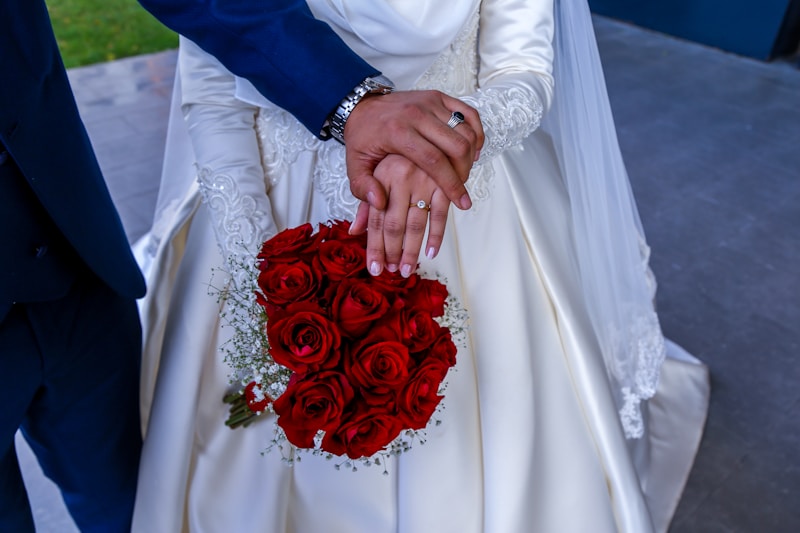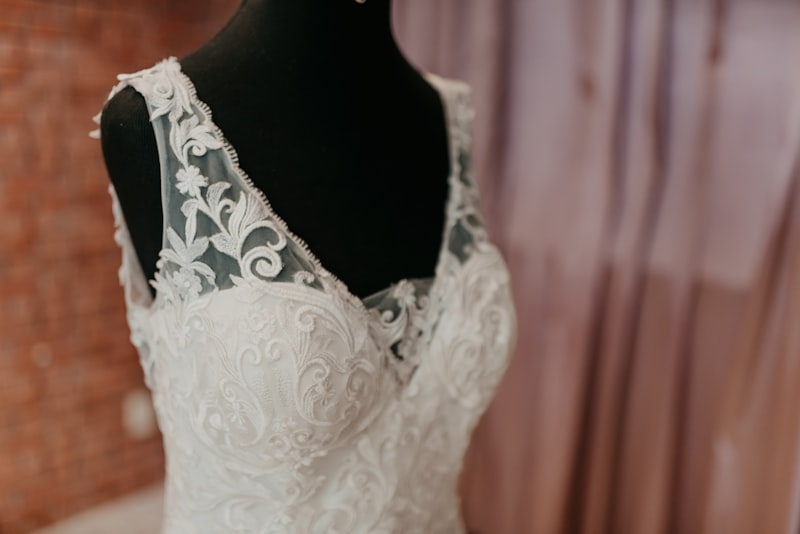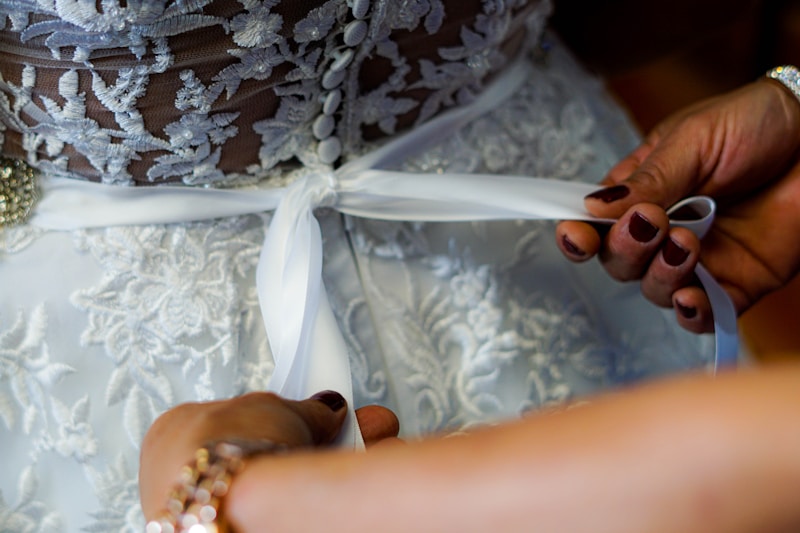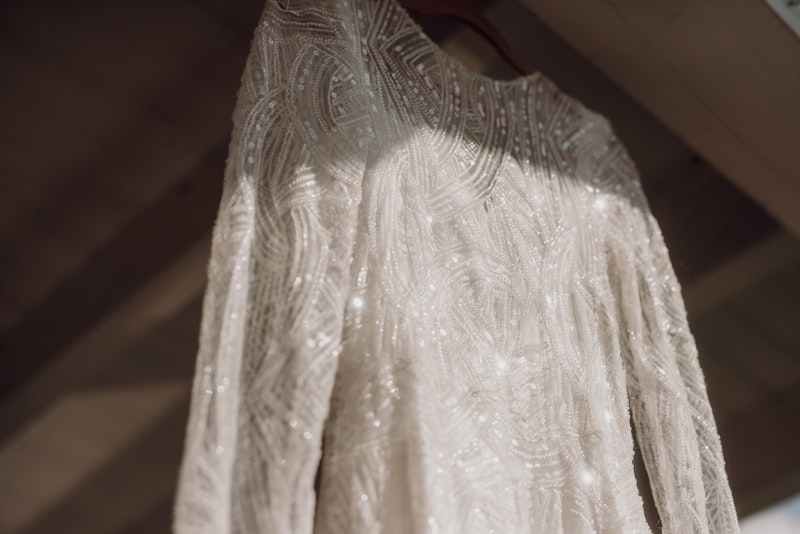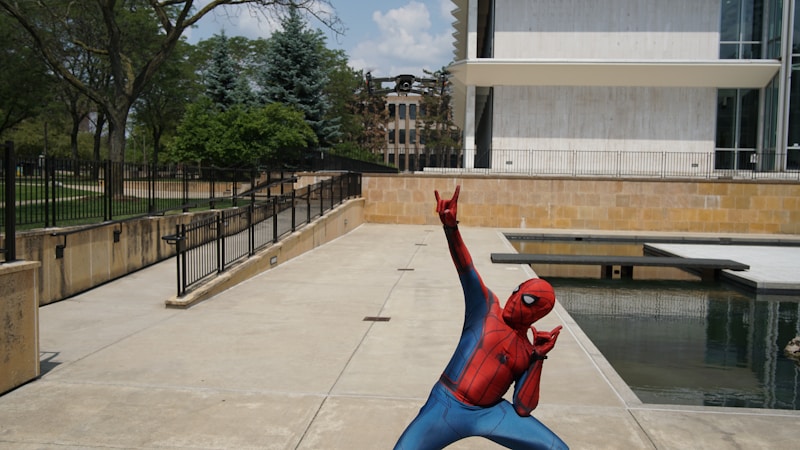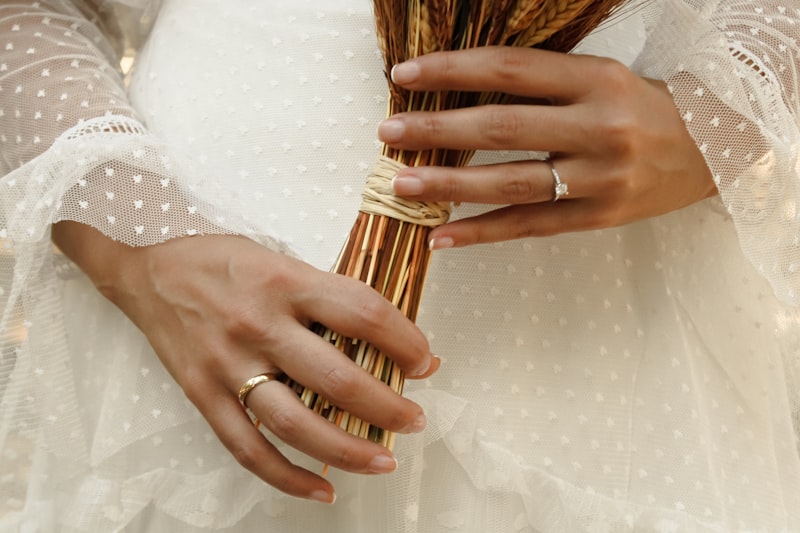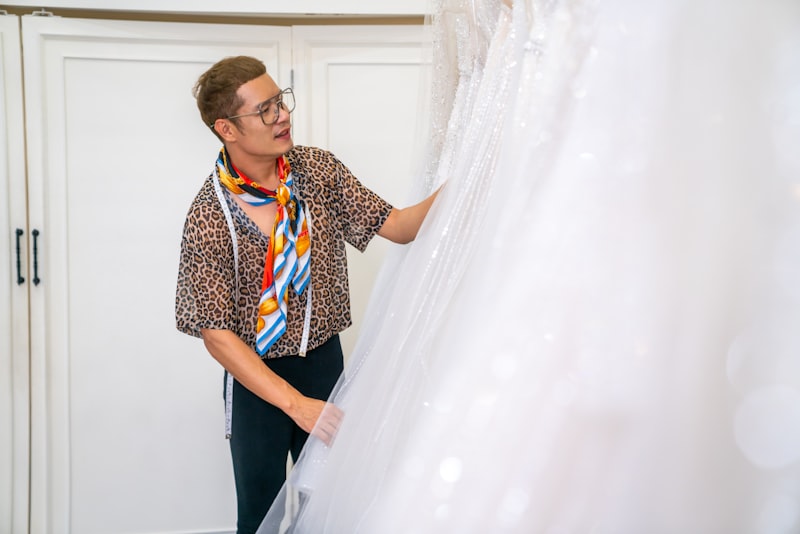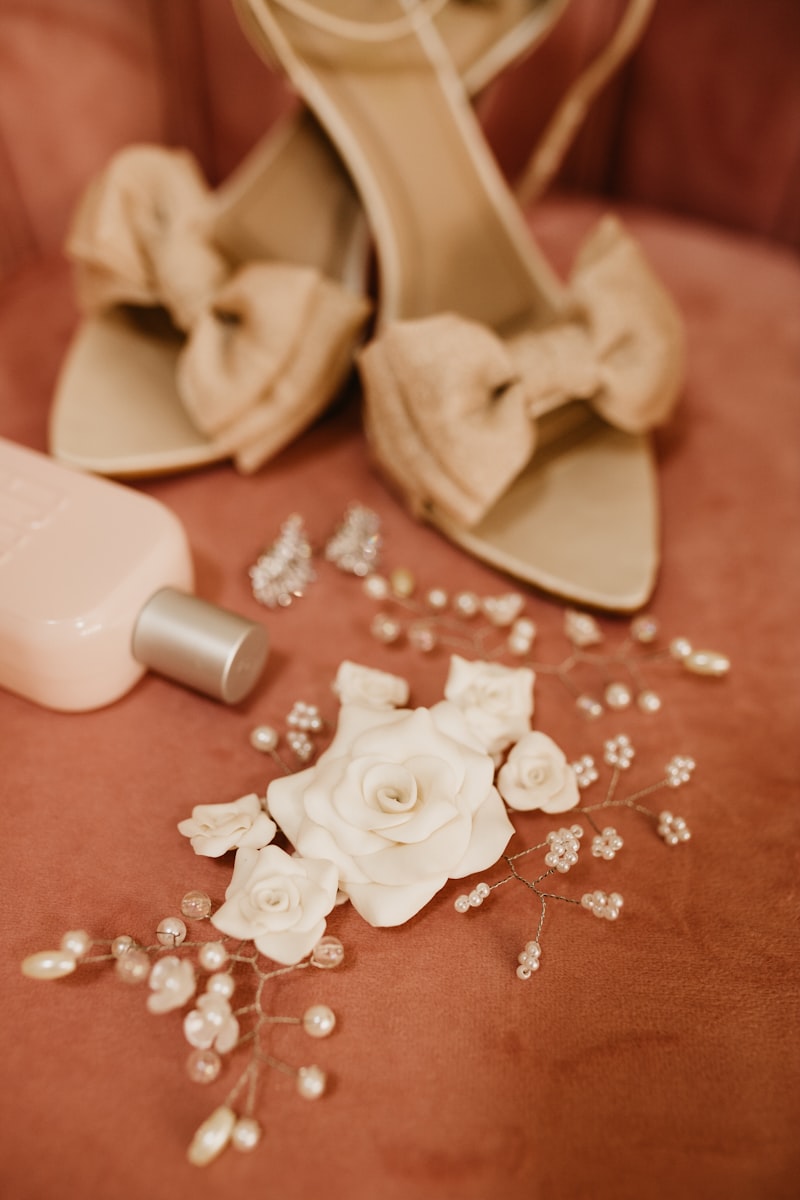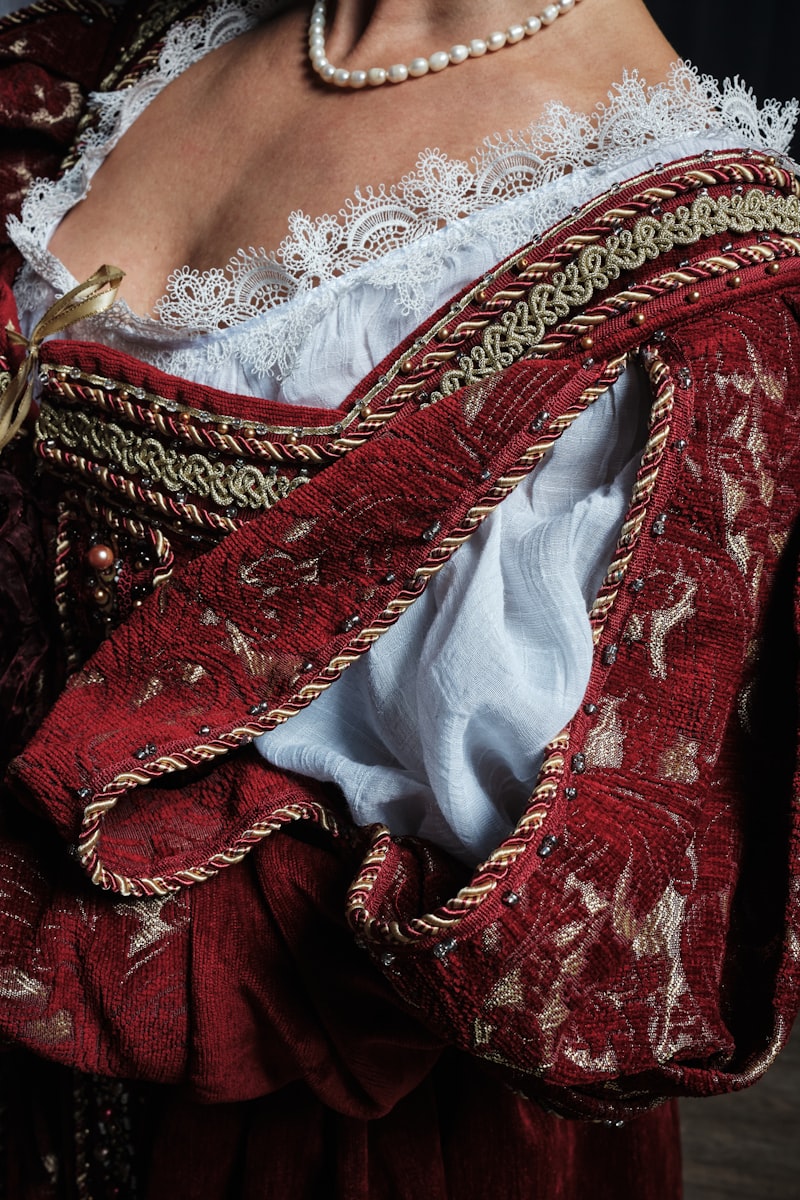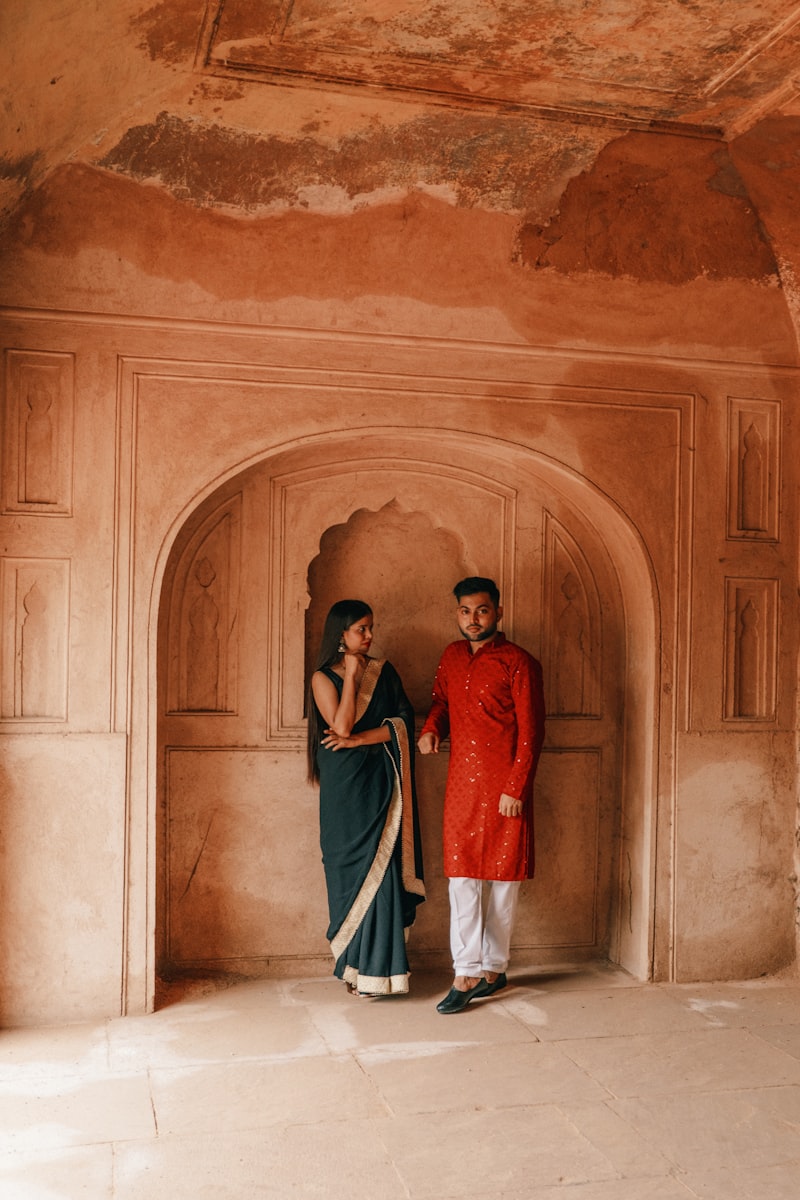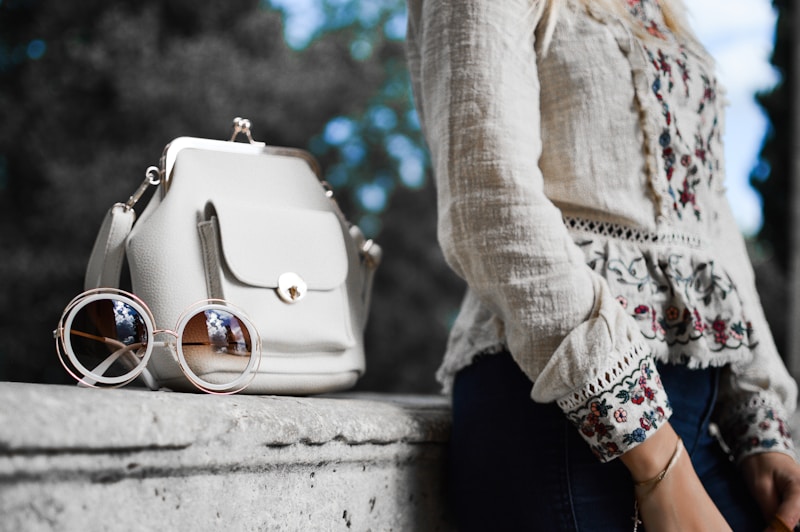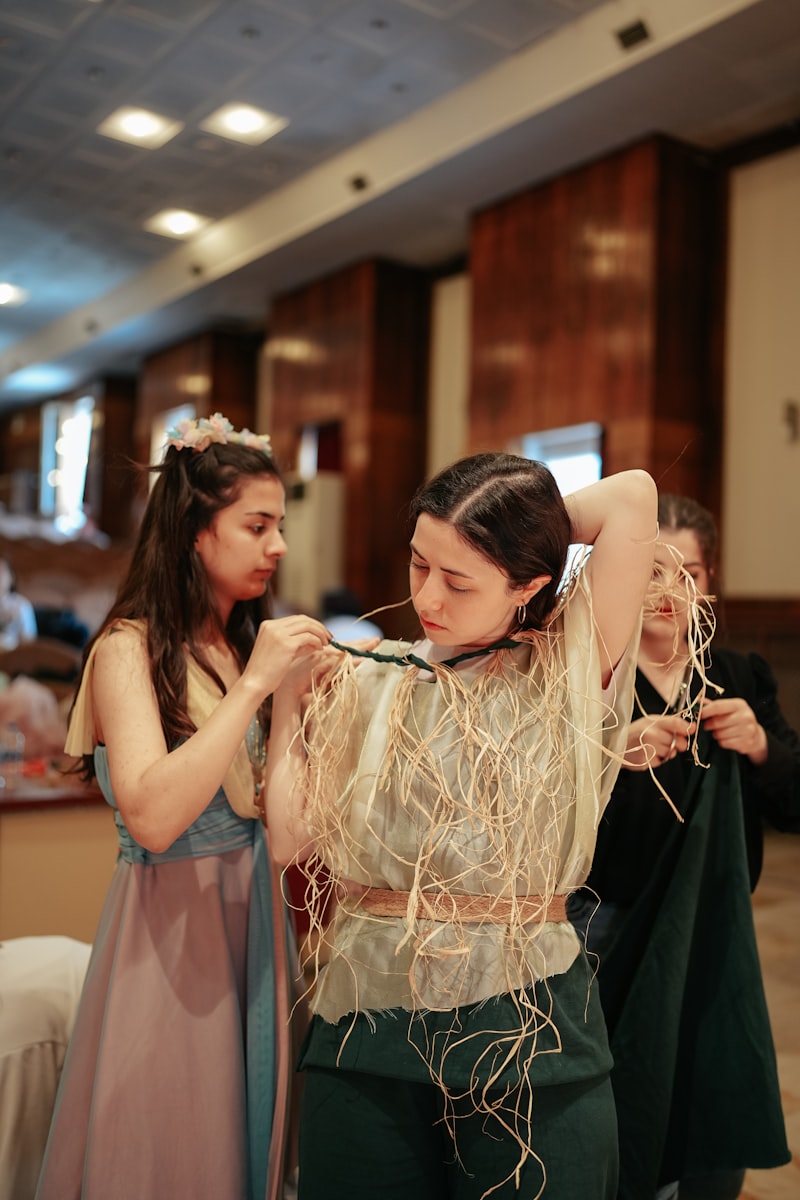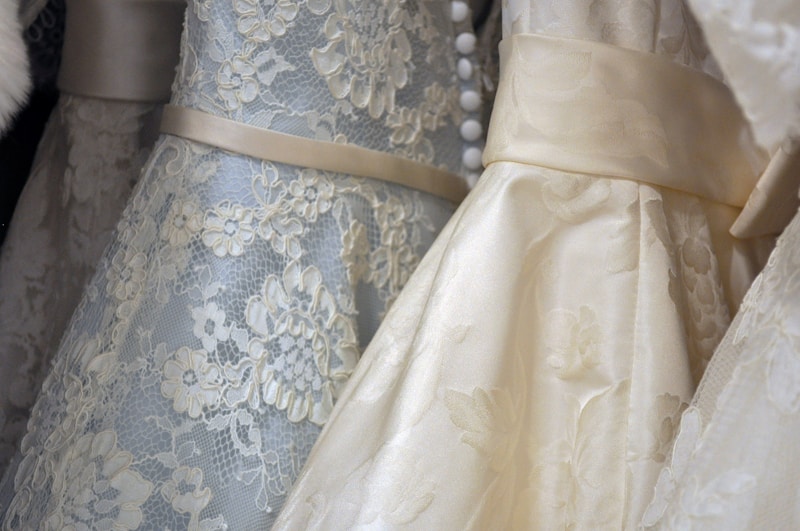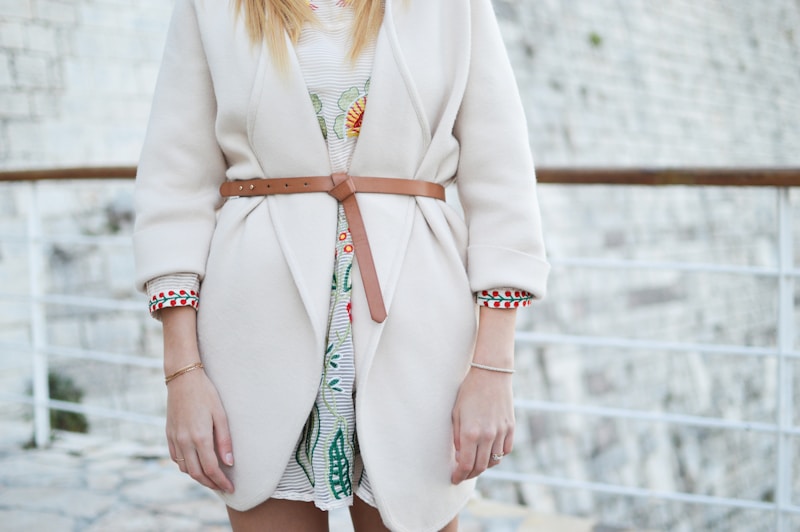Royal Weddings Influencing Bridal Fashion: A Timeless Impact
Royal weddings have always captivated the public's imagination, serving not only as grand celebrations of love but also as defining moments in bridal fashion. From the elegant designs to the exquisite fabrics, the styles worn by royal brides often set trends that resonate across the globe. This article explores how royal weddings have influenced bridal fashion, delving into iconic moments, styles, and trends that continue to inspire brides-to-be.The Royal Influence on Bridal FashionBridal fashion is an ever-evolving domain, but royal weddings instill a sense of tradition and grandeur that few other events can replicate. When a royal bride walks down the aisle, the world watches, and their choice of gown often leads to cascading effects in the fashion industry. Not only do these weddings highlight individual designers, but they often bring traditional elements of bridal fashion to the forefront.Iconic Royal Weddings and Their StylesThroughout history, several royal weddings have left an indelible mark on bridal fashion. Let's explore a few noteworthy examples:Royal EventBridal GownDesignerInfluential TrendsPrincess Diana & Prince Charles (1981)Ivory Silk Taffeta with Long TrainDavid EmmanuelPuffy Sleeves, Romantic EmbellishmentsDuchess of Cambridge & Prince William (2011)Elegant Lace and SatinSarah Burton for Alexander McQueenModern Vintage Style, Lace ApplicationsDuchess of Sussex & Prince Harry (2018)Sleek Off-Shoulder GownClare Waight Keller for GivenchyMinimalism, Clean Li...
Narrative of Love Through Wedding Dress Choices: A Deep Dive into Meaning and Tradition
When it comes to weddings, the wedding dress stands out as one of the most significant pieces of attire, encapsulating the essence of love, tradition, and individual expression. The narrative of love through wedding dress choices reflects not only the bride's personal style but also the cultural meanings and sentimental values attached to various styles and fabrics. This article will explore how wedding dress choices tell a story of love, the different styles that symbolize various sentiments, and offer a thoughtful analysis of trends in this timeless tradition.The Importance of the Wedding Dress in the Love NarrativeWedding dresses serve as a canvas where brides can paint their stories of love, dreams, and hopes. The choice of fabric, color, and design offers couples a way to express their unique relationship. Let’s look at some factors that influence this decision:FactorDescriptionPersonal StyleReflects the individual personality of the brideCultural HeritageIncorporates traditions and meanings from various culturesFamily InfluenceIncludes sentimental values passed down through generationsTrendsEmbraces contemporary styles and modern interpretationsPersonal Style: The Bride’s Canvas of LoveEvery bride has her own unique style which comes into play when choosing a wedding dress. From the classic ball gown to the sleek mermaid silhouette, each style carries its own narrative. For instance, a vintage lace gown can evoke feelings of nostalgia, representing a love story rooted i...
Celebrities Setting Bridal Fashion Standards: A Trend Investigation
In the ever-evolving world of fashion, one category continually garners attention and admiration—bridal fashion. Brides worldwide not only seek timeless elegance but also innovative designs that reflect their personal style. A significant influence on modern bridal fashion comes from the glamour and creativity of the celebrity world. In this article, we will explore how celebrities set bridal fashion standards, the trends they inspire, and what brides can learn from their iconic styles.The Influence of Celebrities on Bridal FashionBridal fashion has undergone tremendous evolution over the years, and celebrities have played a pivotal role in shaping these trends. From the moment a celebrity announces their engagement to the wedding day itself, every detail is scrutinized by fans and fashion enthusiasts alike. They not only set trends but also redefine what it means to be a modern bride.Celebrity Weddings That Changed Bridal FashionSome celebrities have made a significant impact on wedding dress trends. Their choices often inspire designers and influence brides' decisions. Here are a few notable moments:CelebrityWedding YearWedding Dress DesignerTrend ImpactKate Middleton2011Sarah Burton for Alexander McQueenInspired royal-inspired lace and satin gowns.Meghan Markle2018Claire Waight Keller for GivenchyPromoted minimalist styles with modern silhouettes.Blake Lively2012MarchesaIntroduced colorful options for bridal wear.Rihanna----Challenged traditional norms with avant-garde cho...
The Fascinating Historical Context of White Wedding Dresses
Understanding the Origins and Evolution of the White Wedding DressThe white wedding dress is an iconic symbol of bridal fashion, known for its elegance and association with purity. But how did this tradition come to be? In this article, we will explore the historical context of white wedding dresses, tracing their evolution from the influence of royalty to modern interpretations. We will also address common questions related to this timeless fashion choice, making it a comprehensive guide for brides-to-be and fashion enthusiasts alike.The Origins of the White Wedding DressThe tradition of wearing white for weddings became popular in the 19th century, particularly after the marriage of Queen Victoria to Prince Albert in 1840. Queen Victoria chose to wear a white gown made of silk satin for her wedding, defying the norm of colored dresses that were prevalent at the time. This choice not only captivated the public's attention but also set a trend that transformed weddings into grand, celebrated occasions.Queen Victoria's InfluenceQueen Victoria's white wedding dress was not just a fashion statement; it symbolized a new era in bridal attire. Prior to this, brides typically wore their best dresses, which could be of any color and material. The shift to white represented purity and innocence, aligning with societal views of marriage during the Victorian era. From that moment on, white became the predominant color for wedding dresses, influencing generations of brides.Symbolism of W...
Cultural Appropriation in Wedding Fashion: Navigating the Fine Line
Understanding Cultural Appropriation in Wedding FashionCultural appropriation in wedding fashion has become an increasingly important topic for couples planning their big day. As globalized fashion transcends geographical boundaries, it's critical to approach this issue with sensitivity and respect. In this article, we will explore the definition of cultural appropriation, its implications in wedding attire, and offer recommendations to ensure respectful and inclusive choices.What Is Cultural Appropriation?Cultural appropriation occurs when elements of a minority culture are used by members of a more dominant culture without permission or understanding. This can lead to the commodification of sacred symbols and practices and can perpetuate stereotypes. From hairstyles to clothing styles, cultural appropriation can manifest in various forms, and wedding fashion is no exception.The Importance of ContextWhen discussing cultural appropriation, context is vital. A respectful understanding of the cultural significance behind specific wedding garments is crucial. For example, traditional garments such as the Indian Sari, Chinese Cheongsam, or Mexican Huipil are not merely clothing items; they carry deep cultural meanings and histories. By using these garments without understanding their significance, we risk degrading their value.Wedding Trends That Cross the LineMany wedding trends can raise eyebrows when it comes to cultural appropriation. Here are a few examples where good intent...
Globalization and the Standardization of Wedding Attire: A Cultural Phenomenon
Understanding Globalization in Wedding AttireGlobalization has profoundly affected various aspects of our lives, including the way we celebrate significant milestones such as weddings. The evolution of wedding attire under globalization trends paints a fascinating picture of cultural exchange, adaptation, and standardization. In this article, we'll explore how globalization has shaped wedding attire across the globe, the implications for cultural identity, and the future landscape of bridal fashion.The Impact of Globalization on Wedding AttireGlobalization refers to the interconnectedness of the world through trade, communication, and cultural exchange. As countries become more linked, ideas and traditions spread rapidly, often leading to standardization in various fields, including wedding attire.This standardization can be seen in the following ways:TrendsRegionsCharacteristicsWhite Wedding DressesWestern CountriesSymbolizing purity and tradition, popularized by Queen VictoriaDestination WeddingsGlobalCasual, tropical attire becoming the normFusion WearIndia, USACombining traditional Indian lehengas with Western suitsTraditional vs. Globalized AttireMany cultures have distinct wedding traditions that reflect their values and history. However, as globalization progresses, we see a blending of these traditions with mainstream fashion. For instance, in India, traditional wedding attire like lehengas and sherwanis has begun to incorporate elements from Western styles, leading t...
Global Trends in Bridal Gown Design: A Comprehensive Guide
In recent years, the world of bridal fashion has experienced an astonishing evolution. As cultures merge and fashion boundaries blur, brides everywhere are seeking styles that reflect their individuality. This article delves into the global trends in bridal gown design, examining how cultural influences, sustainability, and technological advancements shape contemporary wedding fashions.Cultural Influences Shaping Bridal Gown DesignOne of the most significant factors influencing bridal gown design is cultural heritage. Designers around the world draw inspiration from traditional garments to create contemporary pieces that honor their roots. For example, in India, traditional lehengas adorned with intricate embroidery dominate bridal wear, reflecting the country's rich textile heritage. On the other hand, Western designs often embrace clean lines and minimalism, exemplified by the iconic A-line and mermaid silhouettes.Global Gown Styles: A Comparative LookRegionPopular StylesKey FeaturesNorth AmericaBall Gowns and Fit & FlareLuxurious fabrics, dramatic skirts, and intricate lace detailsEuropeBohemian and VintageFree-spirited designs, delicate lace, and earthy tonesAsiaLehenga and KimonoVibrant colors, heavy embellishments, and cultural motifsAustraliaModern and MinimalistSustainable materials, clean lines, and understated eleganceSustainability in Bridal FashionAs environmental awareness grows, many brides are seeking sustainable options for their wedding attire. The movement t...
How Cultural Heritage Shapes Bridal Fashion: A Beautiful Fusion of Tradition and Modernity
The Impact of Cultural Heritage on Bridal FashionBridal fashion is a diverse and colorful representation of customs, traditions, and cultural heritage from around the world. Each culture brings a unique approach to bridal attire, which reflects their history, values, and beliefs surrounding marriage. In this article, we’ll explore how cultural heritage influences bridal fashion, the modern trends it inspires, and its significance in contemporary society.Understanding Cultural Heritage in Bridal FashionAt its core, cultural heritage encompasses the practices, expressions, and traditions that a specific group of people passes down through generations. This includes art, cuisine, language, and, importantly, fashion. Bridal fashion is uniquely tied to cultural heritage, as it often involves specific customs that are observed during marriage ceremonies.Brides around the world wear outfits that are not just items of clothing; they carry deep meanings and represent a melding of history and identity. For instance, the intricate embroidery found in traditional Indian sarees tells stories of regional artisans and their practices, while the lace of a Western wedding gown symbolizes elegance and purity.Cultural Influences Across the GlobeLet's examine how various cultural heritages influence bridal fashion across different regions:RegionBridal AttireInfluencesIndiaLehenga, SareeRich textiles, vibrant colors, heritage craftsmanshipJapanKimonoSymbolism of colors and patterns representative...
Bridal Fashion as a Reflection of Societal Changes: A Comprehensive Exploration
Understanding the Connection Between Bridal Fashion and Societal Changes Bridal fashion has always been more than just a collection of beautiful gowns and accessories; it serves as a mirror reflecting societal changes over time. This article will delve into the evolution of bridal fashion, examining how different cultures, historical events, and social dynamics have influenced wedding attire through the ages. We will also address common queries related to this topic, providing a holistic view of the intricate relationship between bridal fashion and societal norms. The Evolution of Bridal Fashion Bridal attire has undergone numerous transformations throughout history. From the extravagant gowns of royalty to the minimalist designs favored by modern brides, each era has witnessed shifts that echo broader societal attitudes. Historical Context In the 19th century, Queen Victoria's choice of a white wedding dress marked a significant shift in bridal fashion. Prior to this, brides wore their best dresses regardless of color. This trend towards white symbolized purity and innocence, prompting brides across the Western world to adopt similar styles. Let’s take a closer look at various periods and their influences: Era Bridal Fashion Societal Influence Victorian Era White gowns, lace, and modest designs Emphasis on purity and family values 1920s Flapper-style dresses with shorter hemlines Women’s liberation and changing perceptions of femininity 1950s Voluminous skirts and el...
The Significance of Bridal Accessories in Culture
Bridal accessories have long been an integral part of wedding culture around the world. From elegant veils to exquisite jewelry, these adornments not only enhance the bride’s appearance but also carry significant meaning and traditions. In this article, we will explore the various bridal accessories and their cultural significance across different regions, while also answering some related questions.Understanding Bridal AccessoriesBridal accessories can be considered as the finishing touches that complete a bride's wedding look. They vary widely in style, material, and significance depending on cultural backgrounds. Below is a table summarizing some common bridal accessories and their meanings in various cultures:AccessoryCultural SignificanceCountry/RegionVeilSymbolizes modesty and purity, often believed to protect the bride from evil spirits.Western culturesTiaraA sign of royal heritage, indicating that the bride is a queen for the day.Various culturesHennaRepresents good luck and beauty; applied to the bride’s hands and feet.Indian cultureFlower crownSymbolizes fertility and a connection to nature.Western and Indigenous culturesGarterTraditionally thrown by the bride to signify good luck to the unmarried guests.Western culturesThe Role of Bridal Accessories in Different CulturesBridal accessories vary significantly based on cultural contexts. For example, in Western societies, a wedding veil is a common sight that represents purity and sometimes, social status. Traditional...
Cultural Commentary Through Bridal Attire Trends: A Reflection of Society
Understanding Cultural Commentary Through Bridal Attire TrendsBridal attire has always been more than just clothing; it serves as a lens through which we can examine cultural shifts, societal values, and the evolving role of marriage in different communities. As we dive into the world of bridal fashion, we will explore how these trends offer cultural commentary and reflect pertinent changes within society. In this article, we will evaluate the historical context, current trends, and the significance of bridal attire, while providing insights that will be valuable for brides-to-be and fashion enthusiasts alike.The Historical Context of Bridal AttireTo truly appreciate modern bridal attire trends, it is essential to understand their historical roots. Traditional wedding dresses have varied tremendously over time and across cultures. For instance, the iconic white wedding dress, popularized by Queen Victoria in the 19th century, symbolized both purity and a break from the norm, heralding a new era of bridal fashion.Throughout the decades, cultural commentary can be traced through bridal attire:DecadeTrendCultural Significance1920sFlapper dressesEmphasis on women's liberation and social change1950sA-line dresses with full skirtsReturn to conservative values post-WWII1980sElaborate and oversized gownsReflecting the era's excess and ambition2000sSimple and elegant stylesShift towards minimalism and personal expressionCurrent Trends in Bridal AttireFast forward to the present day, w...
Cultural Shifts in Bridal Garment Construction Techniques Across the Globe
Understanding the Evolution of Bridal WearThe world of bridal garments is a captivating tapestry woven together by culture, tradition, and innovation. As we explore the cultural shifts in bridal garment construction techniques, we uncover the rich history and transformations that shape the way brides embrace their special day. From ancient times to modern trends, bridal wear reflects changing societal values, influences, and technologies.The Historical Context of Bridal GarmentsBridal garments have evolved significantly over the centuries. Historically, weddings represented not only a union between two individuals but also a joining of families and communities. The choice of bridal attire often reflected cultural identity, social status, and familial traditions. For instance, in the early 20th century, the white wedding dress, made popular by Queen Victoria, symbolized purity and had a profound impact on bridal fashion. However, varying cultures have their unique takes on bridal garments. Traditional Styles Around the WorldBridal fashion worldwide is heavily influenced by local customs. Here are some notable traditional styles:CultureBridal GarmentConstruction TechniquesIndianSari or LehengaIntricate embroidery and fabric drapingChineseCheongsam (Qipao)Tailored fits with silk fabricWesternBallgown or A-line dressUse of lace, tulle, and structured bodicesAfricanKanga or WrapperBold prints with stitching techniquesModern Innovations in Construction TechniquesAs societies progre...
Exploring the Historical Context of Wedding Fashion Changes: A Journey Through Time
Weddings are not just events; they are a cultural narrative reflecting societal values, traditions, and fashion. The evolution of wedding fashion offers a fascinating insight into the historical context of our world, revealing how changes in society, politics, and culture have influenced bridal attire over the decades. This article delves into the historical context of wedding fashion changes and the implications they carry. The Evolution of Wedding Fashion Through the Ages Wedding fashion has undergone significant transformations from ancient civilizations to modern times. The styles and fabrics that characterize weddings today have deep roots imbedded in historical contexts. Below, we explore major eras that have influenced bridal attire:EraKey Features of Wedding FashionInfluencing FactorsAncient CivilizationsSimple gowns often in white, symbolizing purity.Religious and cultural significance.Medieval to RenaissanceRich fabrics and intricate jewelry; weddings became a display of social status.Feudal systems, religious fervor.Victorian EraThe iconic white wedding dress introduced by Queen Victoria.Royal influence, rise of romanticism.20th CenturyFlapper style, then the more traditional silhouettes post-WWII; focus on femininity.World events, economic shifts, and media.Modern EraDiverse styles reflecting personal expression, including color and unconventional fabrics.Globalization, cultural exchange, and individualism.1. Ancient Civilizations: The Origins of Wedding AttireIn...
Cultural Transformations in Wedding Attire: A Global Perspective
Understanding the Evolution of Wedding Attire Across CulturesWeddings have always been significant milestones in people's lives, serving as a vital expression of cultural identity and individual values. One of the most visible aspects of this celebration is the attire worn by the couple and guests. Over the years, wedding attire has undergone remarkable transformations, influenced by factors such as globalization, shifting societal norms, and the blending of traditions. In this article, we will explore the cultural transformations in wedding attire, examining key elements that have shaped its evolution across different societies.The Influence of Cultural Heritage on Wedding AttireWedding attire is often a reflection of cultural heritage. In many cultures, traditional garments symbolize values, history, and social status. For instance, in India, brides may wear a vibrant red or gold saree, adorned with intricate embroidery and heavy jewelry, representing auspiciousness and prosperity. In contrast, Western brides often opt for white dresses, which symbolize purity and new beginnings. This cultural disparity showcases how wedding attire is deeply rooted in tradition. Culture Traditional Attire Symbolism India Saree or Lehenga Prosperity & Tradition Western Countries White Dress Purity & New Beginnings China Qipao or Wedding Gown Good Luck & Prosperity Mi...
Globalization's Effect on Bridal Fashion: A Comprehensive Exploration
Understanding Globalization and Its Impact on Bridal Fashion In today's interconnected world, the concept of globalization plays a significant role in various industries, including the bridal fashion sector. As cultures collide and merge, their influences create a rich tapestry of styles, designs, and preferences that shape the way brides choose to present themselves on their special day. The Rise of Global Influence in Bridal Fashion Globalization has led to the sharing of ideas and trends across borders, allowing for an amalgamation of traditional and contemporary bridal wear. Whether it's the intricate beadwork of Indian bridal gowns or the minimalist elegance of Scandinavian designs, brides now have a plethora of options. The desire for unique, culturally diverse, and statement-making pieces has never been more pronounced. The Shift in Bridal Style Trends One of the most apparent effects of globalization on bridal fashion is the variety of styles available. Traditional elements from various cultures have merged with modern sensibilities, resulting in innovative designs that appeal to a global audience. For instance, destination weddings have popularized incorporation of local flavors into bridal attire, making it a multifaceted industry. Factors Influencing Bridal FashionExamples Cultural exchangeIncorporating traditional motifs from different countries Social mediaInfluence of wedding influencers and trends showcased on platforms like Instagram Designe...
The Symbolic Evolution of Bridal Colors Across Cultures
Weddings are a tapestry of traditions, rituals, and attire, each woven with meaning and significance. One of the most fascinating elements of any wedding attire is the color of the bridal gown. As we explore the symbolic evolution of bridal colors across cultures, we can see how they reflect the values, beliefs, and customs of various societies. This article will delve into the historical backgrounds, cultural significance, and modern interpretations of bridal colors, showcasing their diverse meanings across continents.The Importance of Color in Cultural SymbolsColors play a pivotal role in symbolism around the world. From the fiery reds of luck in China to the pure whites of Western weddings, bridal colors often communicate deeper messages about love, purity, and fertility. Different cultures associate various meanings with colors, which can significantly affect a bride's choice of gown. Below, we present a table highlighting the meanings of popular bridal colors across different cultures:ColorCultureSymbolismWhiteWestern countriesPurity, innocenceRedChinaGood luck, joyBlueGreeceLove, fidelityYellowIndiaHappiness, prosperityGreenMiddle EastFertility, growthA Closer Look at Bridal Colors in Different Cultures1. White: The Western TraditionIn many Western cultures, the white bridal gown symbolizes purity and innocence. This tradition is largely traced back to Queen Victoria of England, who wore white for her wedding to Prince Albert in 1840. This choice was considered unconven...
Exploring Regional Variations in Bridal Dress Styles: A Cultural Journey
Understanding Bridal Dress Styles Around the WorldBridal dress styles are not just mere fashions; they are woven into the cultural and historical fabric of societies around the globe. Each region has its unique way of celebrating love and marriage through the adornment of brides, which reflects local traditions, customs, and beliefs. In this article, we will delve into some of the distinctive bridal dress styles found in various parts of the world, exploring how geography influences these choices.The Influence of Geography on Bridal DressRegional variations in bridal dress styles are often dictated by geography, climate, and cultural heritage. For instance, in hotter climates, lighter fabrics and more breathable designs are favored, while colder regions might see the incorporation of heavier materials. Let’s take a closer look at some regions and their bridal dress styles.RegionBridal Dress StyleCharacteristicsSouth AsiaSareeVibrant colors, intricate embroidery, often worn with a long blouse.North AmericaBall GownFormal, layered fabric, often with a train; popularized in Western culture.East AsiaQipaoFitted dress, often with floral patterns, reflects elegance and tradition.Middle EastAbaya/KaftanLoose, flowing garments, may feature rich embroidery, often accompanied by headpieces.Bridal Dress Styles in South AsiaIn South Asia, bridal dresses are a stunning showcase of vibrant colors, intricate embroidery, and rich textiles. The saree is one of the most traditional bridal outf...
Bridal Attire as a Canvas for Cultural Storytelling
Understanding the Significance of Bridal AttireBridal attire has long transcended mere fashion. It serves as a profound canvas for cultural storytelling, reflecting the rich heritage and traditions of various communities around the world. The garments worn by brides are often steeped in symbolism, representing not only personal identity but also the collective history of their cultures. In this article, we will explore the intricate relationship between bridal attire and cultural narratives, examining different global traditions and styles.The Cultural Significance of Bridal AttireBridal attire varies significantly across cultures, each design carrying unique meanings and telling specific stories. Let's take a closer look at some of the renowned bridal garments around the world:RegionBridal AttireCultural SignificanceIndiaSaree or LehengaSymbolizes beauty and femininity, often embellished with traditional embroidery.ChinaQipao (Cheongsam)Represents elegance and tradition, typically red to symbolize good luck.Western CountriesWedding GownOften a symbol of purity and innocence, with variations reflecting personal styles.AfricaKanga or BoubouExpresses cultural pride, often featuring vibrant colors and patterns unique to the bride's ethnic group.JapanKimonoEmbodies grace and heritage, often adorned with seasonal motifs.Bridal Attire as a Storytelling MediumThe choice of bridal attire often serves as a communication tool for brides to convey their cultural narratives. For example,...
Heritage and Innovation in Bridal Fashion Design: A Perfect Blend for Modern Weddings
Exploring the Fusion of Heritage and Innovation in Bridal FashionBridal fashion is an exciting field where tradition meets modernity, creating stunning designs that resonate with both history and contemporary styles. As weddings evolve, so do the preferences for bridal attire. The concept of incorporating heritage into bridal fashion while embracing innovation is becoming increasingly popular. This article will explore how these two elements interact in the world of bridal fashion, providing a comprehensive guide for brides-to-be and fashion enthusiasts alike.The Importance of Heritage in Bridal FashionHeritage plays a crucial role in defining bridal fashion across different cultures. Each culture has unique traditions that influence the bridal design, fabrics, and color choices. From intricate embroidery to specific styles, the legacy of bridal fashion is rich and varied. Some notable aspects of heritage in bridal fashion include: Cultural Symbols: Many brides incorporate symbols that represent their cultural background, adding a personal touch to their attire. Traditional Techniques: Handmade lace, embroidery, and fabric choices often showcase craftsmanship passed down through generations. Historical Influence: Many modern designs draw inspiration from historical garments, reflecting styles worn by brides in different eras.Global Perspectives on Heritage in Bridal FashionRegionHeritage ElementsAsiaSilk sarees, intricate embroidery, vibrant colorsWestClassic white g...
Bridal Fashion as a Reflection of Changing Societal Values
IntroductionBridal fashion has always been more than just the clothes worn on a wedding day. It acts as a mirror reflecting societal values, traditions, and changing perceptions of marriage and femininity. This ever-evolving field showcases the transformation in cultural norms, gender roles, and aesthetics throughout history. In this article, we will delve into how bridal fashion signifies shifts in societal values, from historical trends to contemporary styles, and explore the implications of these changes.Historical Perspective: The Evolution of Bridal FashionHistorically, bridal fashion has been deeply influenced by cultural and societal conditions. For example, during the Victorian era, brides often wore elaborate dresses that emphasized modesty, adorned with intricate lace and longer hemlines. This reflected societal expectations for women to adhere to strict standards of conduct and attire. In contrast, the 1920s brought significant changes; the flapper style liberated women from constraining garments, illustrating a cultural shift towards self-expression and independence.The 20th Century: Emancipation and IndividualityThe mid-20th century saw a further evolution of bridal fashion. With the influence of Hollywood and iconic figures like Audrey Hepburn, bridal gowns became more glamorous and varied. The introduction of the 'princess' gown in the late 1980s, often featuring voluminous skirts and long trains, embodied fantasies surrounding weddings but also reflected a soc...
